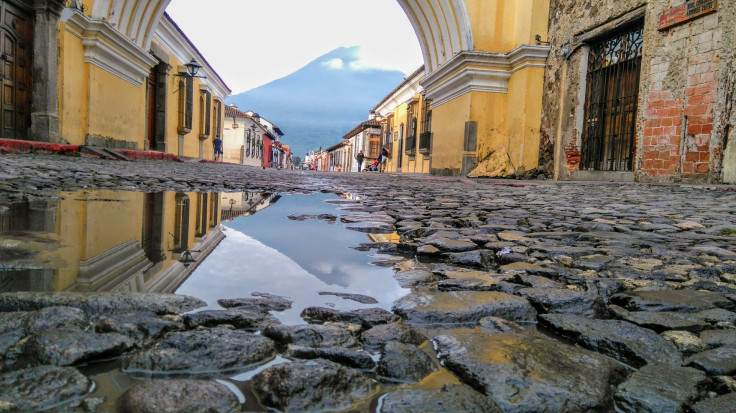Volcano Causes Of Death Since 1500 AD: Pyroclastic Flow, Projectiles, Tsunamis

Volcanoes can kill people up to 100 miles away when they erupt, between falling ash, toxic gas, projectiles and other hazards both during eruptions and in their quiet periods.
A group of scientists combed through records of volcano-related fatalities going all the way back to the year 1500, to flesh out a database on where and how these people died and provide experts with crucial information about who is at risk from volcanic activity. The scientists used media reports as well as academic literature to accumulate information about fatality numbers, according to their study in the Journal of Applied Volcanology. They separated these fatalities by specific causes, dates and other factors, like the occupations of the victims.
The team found that up to about 3 miles from the volcano, the most common cause of death is ballistics, which include flying rocks that are shot out and become dangerous projectiles.
Between that distance and about 9 miles from the volcano, people die most commonly from pyroclastic flows, the volcanic emission most famous for instantly killing the residents of Pompeii in the first century, when Mount Vesuvius erupted. The flows are dark clouds of rock, gas and ash that move faster than people can run or drive away from them.
Beyond 9 miles from the volcano, tsunamis; rock particles; and volcanic mudflows called lahars are the leading cause of death.
“Volcanoes can produce far-reaching hazards that extend distances of tens or hundreds of kilometers in large eruptions, or in certain conditions for smaller eruptions,” the study says. “About a tenth of the world’s population lives within the potential footprint of volcanic hazards and lives are regularly lost through volcanic activity.”
The scientists hope aggregating information about how volcanoes kill people will help prevent deaths surrounding the more than 1,500 volcanoes around the world that have shown activity in the last 10,000 years.
“Local residents are the most frequently killed, but tourists, volcanologists and members of the media are also identified as common victims,” the study says. “Understanding how volcanic threat varies with distance from the volcano and which groups of people are affected most can contribute to risk reduction by providing empirical data on which to forecast impacts or support evidence-based eruption planning and preparedness.”
With the new additions, the volcano fatality database now has more than 278,000 deaths listed, stemming from hundreds of incidents.
Almost half of the deaths since 1500 occurred within 6 miles of a volcano, but some happened as far as 100 miles away from the source.
Researcher Sarah Brown said in a statement from the University of Bristol that knowing the occupations of the victims further informs officials who are looking to reduce volcano-related fatalities.
“The identification of these groups of victims is key for improving safety and reducing deaths and injuries in these groups,” she said. “While volcanologists and emergency response personnel might have valid reasons for their approach into hazardous zones, the benefits and risks must be carefully weighed. The media and tourists should observe exclusion zones and follow direction from the authorities and volcano observatories. Tourist fatalities could be reduced with appropriate access restrictions, warnings and education.”
© Copyright IBTimes 2025. All rights reserved.





















